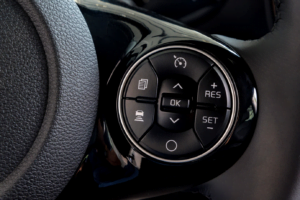
Car accidents are a leading cause of injuries and fatalities worldwide. Every year, thousands of lives are lost, and countless individuals suffer from the devastating consequences of bad car accidents. However, with the advancements in technology and the introduction of Advanced Driver Assistance Systems (ADAS), there is hope for a safer future on the roads.
What are Advanced Driver Assistance Systems (ADAS)?
Advanced Driver Assistance Systems, commonly known as ADAS, are technological features designed to increase the safety of driving a vehicle. These systems utilize a human-machine interface to enhance the driver’s ability to react to potential dangers on the road. ADAS work by providing early warnings and automated assistance to prevent or mitigate crashes. They are capable of identifying and reacting to potential hazards faster than a human driver, thus reducing the risk of bad car accidents.
ADAS technologies have been integrated into various vehicles, with some systems coming as standard features and others available as aftermarket options. These systems have varying capabilities, depending on the manufacturer. It is essential for drivers to understand the correct use of ADAS technologies and not rely solely on them for driving. While ADAS can greatly reduce driving risk, over-reliance on these systems can be dangerous.
The Importance of ADAS in Preventing Bad Car Accidents
The introduction of ADAS has revolutionized the automotive industry by significantly improving road safety. These systems address human error, which is often the leading cause of bad car accidents. By automating certain aspects of driving and enhancing driver awareness, ADAS have proven to reduce the number of fatalities and injuries on the roads.
1. Adaptive Cruise Control
One of the key ADAS technologies is Adaptive Cruise Control (ACC). This system uses sensors to monitor the distance between the vehicle and the one ahead. It automatically adjusts the vehicle’s speed to maintain a safe following distance.
2. Anti-lock Brakes
Anti-lock Braking Systems (ABS) are another important ADAS feature. ABS prevent the wheels from locking up during braking, thus maintaining traction and control. This technology significantly reduces stopping distances and allows the driver to steer the vehicle while braking.
3. Forward Collision Warning
Forward Collision Warning (FCW) systems use sensors to detect potential collisions with vehicles or obstacles ahead. These systems provide visual and audible warnings to alert the driver of an imminent collision.
4. High Beam Safety System
Driving at night can be challenging, especially when facing oncoming traffic or in poorly lit areas. High Beam Safety Systems, also known as Automatic High Beams (AHB), automatically adjust the vehicle’s headlights between high and low beams based on the presence of other vehicles.
5. Lane Departure Warning
Lane Departure Warning (LDW) systems use cameras or sensors to monitor the vehicle’s position within the lane. If the vehicle drifts out of the lane without the use of a turn signal, the LDW system alerts the driver through visual, audible, or haptic warnings.
6. Traffic Signals Recognition
Traffic Signals Recognition (TSR) systems utilize cameras or sensors to detect and interpret traffic signs and signals. These systems provide visual or audible alerts to remind drivers of speed limits, stop signs, and other traffic regulations.
Orlando Car Accident Attorney
While ADAS systems have shown significant potential in reducing bad car accidents and improving road safety, it is important for drivers to understand their limitations and use them as aids rather than relying solely on them. Ultimately, safety is the responsibility of the driver. If you’ve been injured in a car crash, talk to an Orlando car accident attorney at the Martinez Manglardi personal injury law firm. Call 407-846-2240 for a free consultation. Convenient locations throughout Central Florida. We’ve been helping Central Florida accident victims recover their losses for more than 35 years.





